Now we are arriving in the place which first made us consider of going to Ethiopia: The Danakil Depression. My dad sent me an article last summer about the Danakil which caused us to further research traveling Ethiopia and finally resulted in the decision to come here.
The danakil region is not too easy to visit. The German Foreign Office discourages from going there without an armed escort. It’s therefore only accessible via an organized tour. We booked our tour in Bahir Dar together with the transfer from Lalibela to Mekele, which is the gateway to the Danakil Depression. From then everything went pretty smoothly, we never even had to show our receipt to anyone.
On January 6 we were picked up from our hotel and driven to the agencies office. There we met the rest of our group and were split into groups of four who would share a car and driver. Our driver was Nasser, a very friendly guy with limited English but always trying. We shared a car with a Finnish and a Spanish woman.
It takes most of the day to reach Danakil including a lunch and coffee break. We arrived at our camp and only stopped shortly to claim our beds by throwing mattress onto wooden bed frames. The camp consists of many of these wooden bed frames and a few sheds for cooking.
We went to the salt lake after. It was once a part of the Red Sea and the constantly evaporating water has left a thick salt crust. Depending on the wind direction the water lake shifts it’s position. There is a small pool cut into the salt where it’s possible to swim, or rather float, since the salt concentration is very high. We decided to only hold our feet into the water since we didn’t want to be all salty, even though they had brought some fresh water for washing off the salt. We walked around the shallow water of the lake which looked amazing in the fading sunlight.
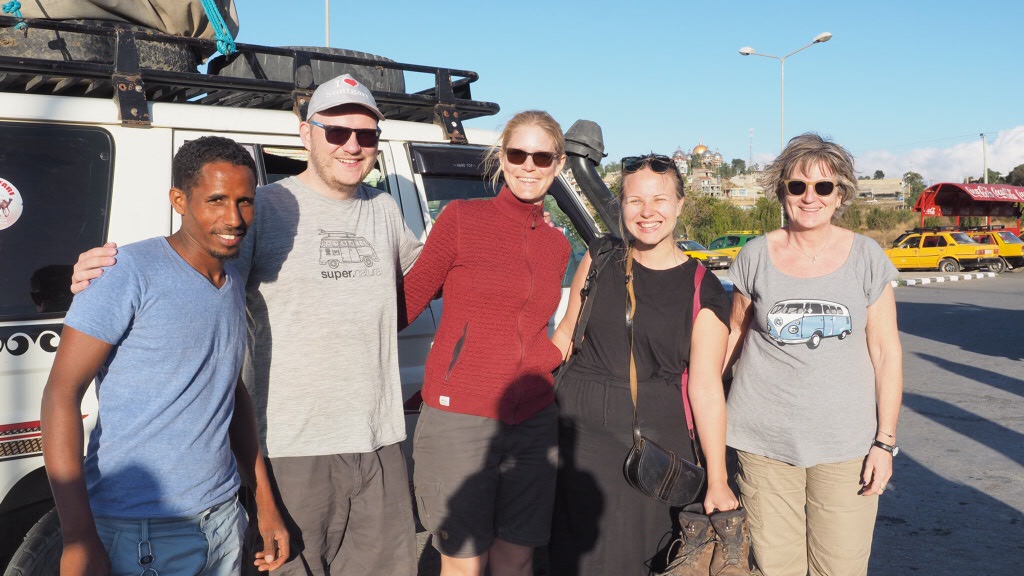

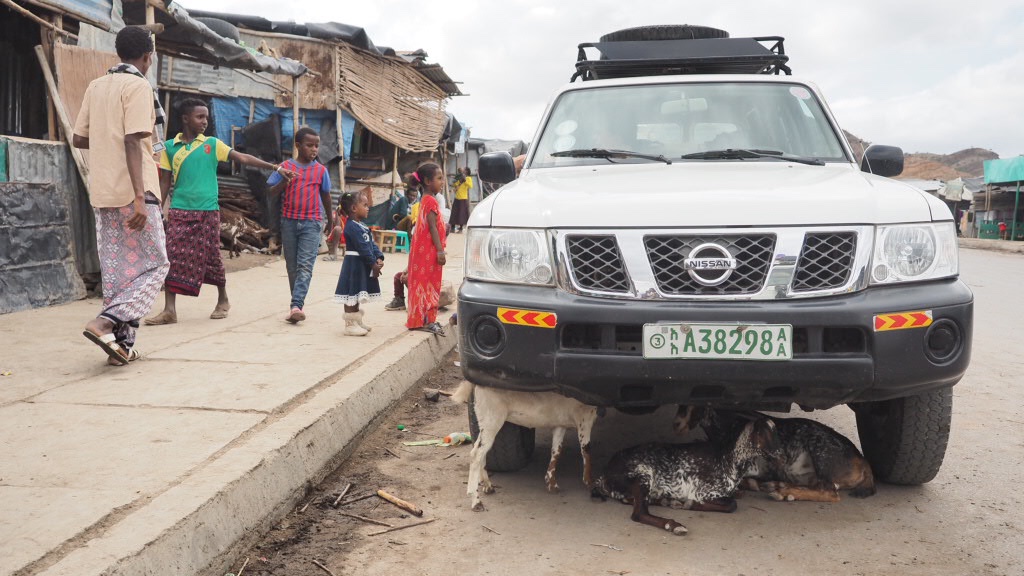


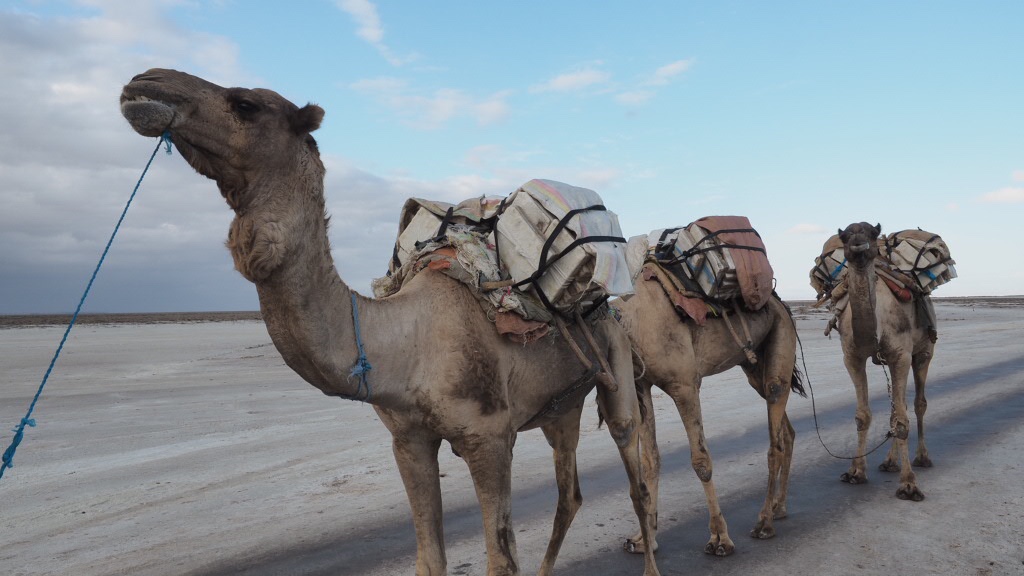
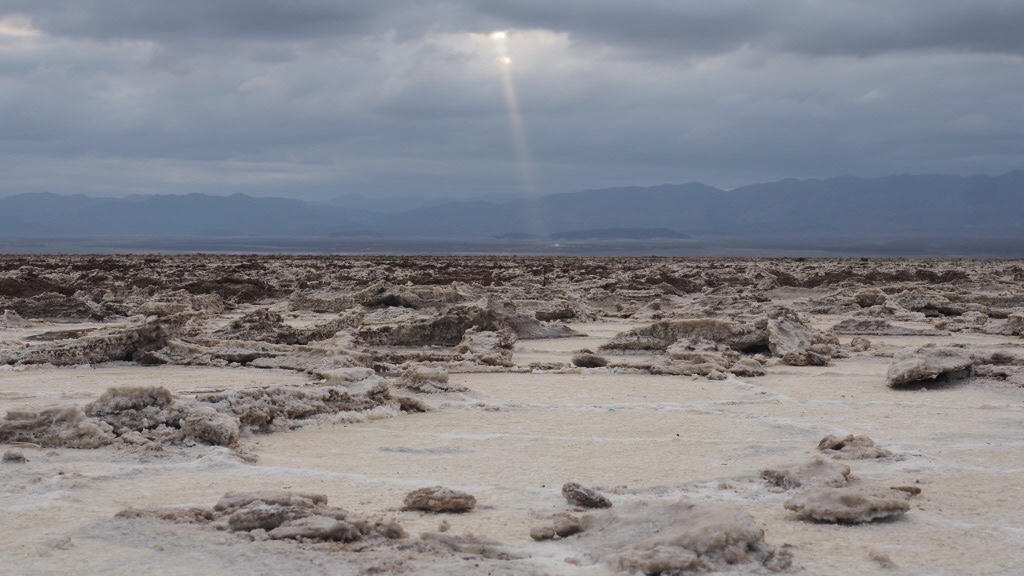
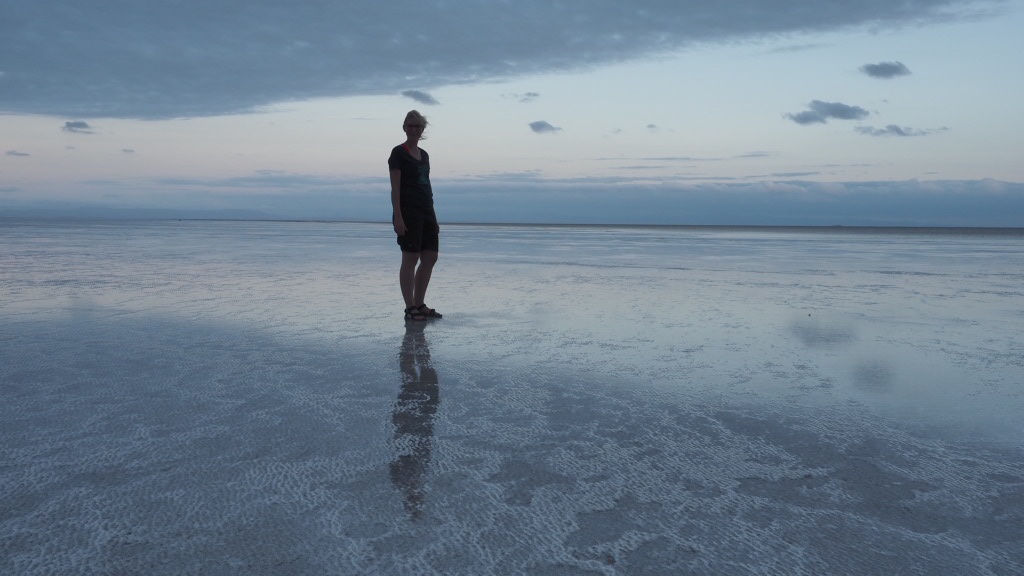
After a surprisingly good sleep under the stars we were woken in the early morning, rather still night. We drove through the dark with the salt reflecting the car’s headlight. It felt like driving through a snow covered landscape only the warm wind coming in through the window told the truth.
We arrived at what the local Afar people call Dallol, the colorful land. Here volcanic vents formed about 100 years ago. From the sulphuric geysers acidic water with potash comes to the surface. The sediment left is first white and then turns yellow and red before becoming brown. The resulting landscape is nothing short of spectacular! There is a few more sights caused by the volcanic activity nearby: A salt mountain, caused by the surrounding land to sink, and a oily sulfur lake, whose water the locals use to treat skin problems.
The salt here is mined by hand by the local Afar people. They cut rectangular squares from the salt which are then stacked and transported by donkey or camel caravan to Mekele, a five day trip.
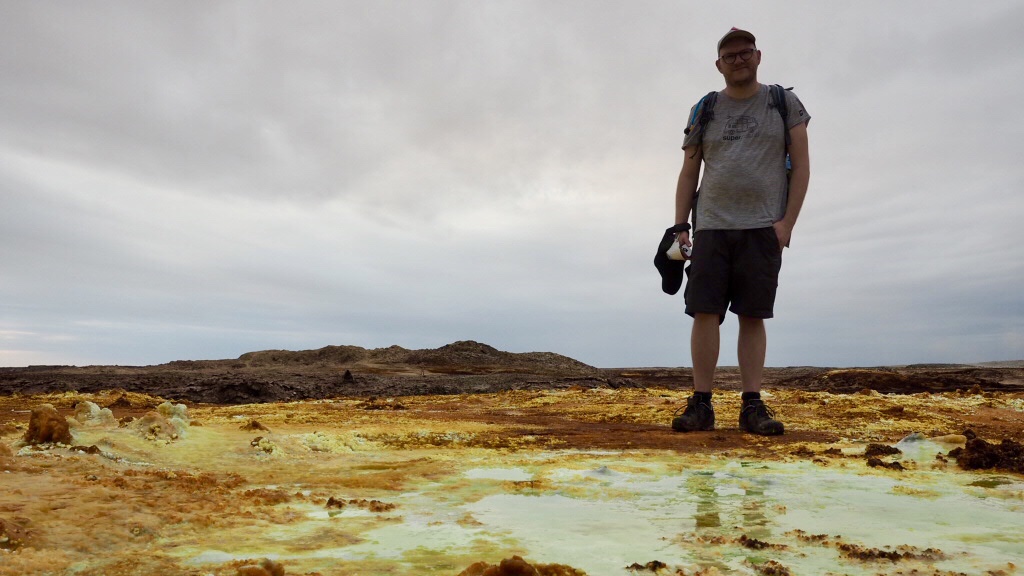

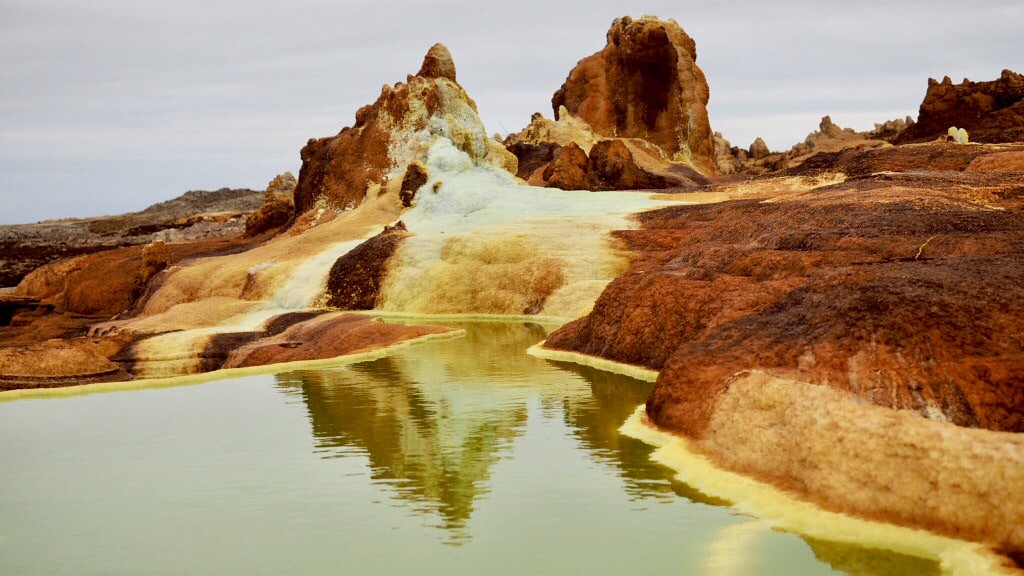

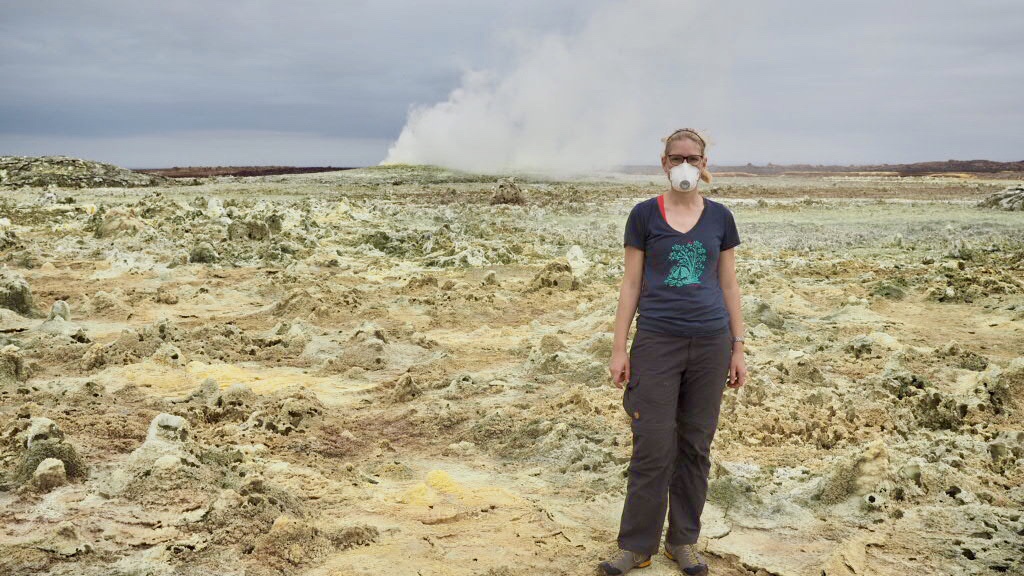
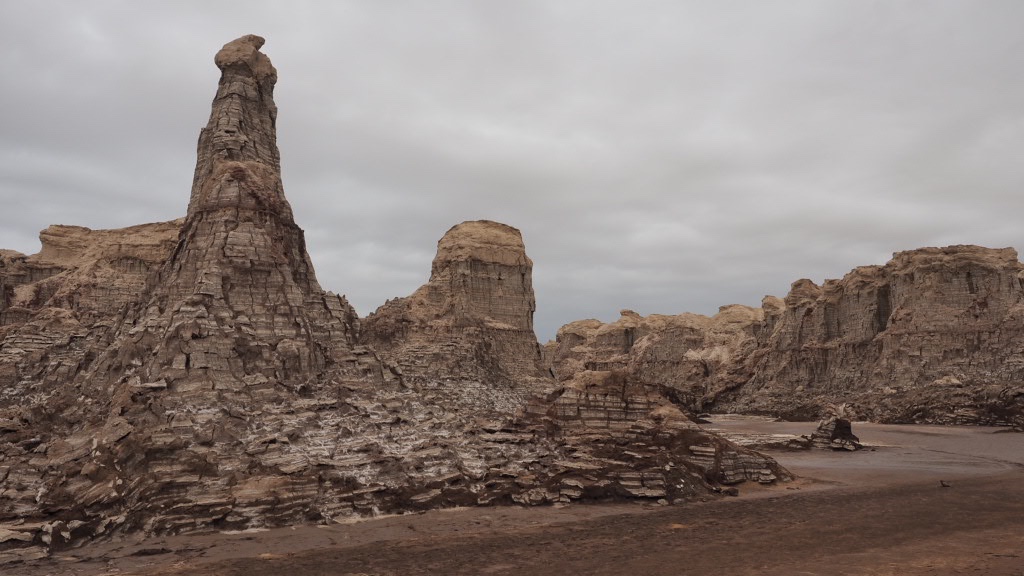



The next stop and also our goal for the night was Erta Ale, an active shield volcano. Here we were disappointed by the organization and time management.We had expected to walk to the crater with the setting sun, after an early dinner. Instead we arrived at base of the mountain shortly after sunset and had to wait around for dinner for over an hour and we didn’t leave to walk up for another hour. By that time it wasn’t only dark but we’ve had a very long day and were exhausted. Luckily it was nearly a full moon so we could make the ascend in the moonlight without headlamps which gave it a nice atmosphere.
We do realize walking to the rim of an active volcano is somewhat ridiculous and maybe even crazy. From the rim we even descended further into the crater to see the magma. At times there is a full magma lake, but we weren’t so lucky. We did see the lava through a few holes and we could hear the magma roaring underneath. We slept not very far from the crater rim. Yes, crazy. When we woke up in the morning, again, well before sunrise, I was a bit relieved we did not suffocate in our sleep. We had been wearing masks but that doesn’t help for everything… With the rising sun we could see the structures formed from the cold magma that was liquid only ten years ago.
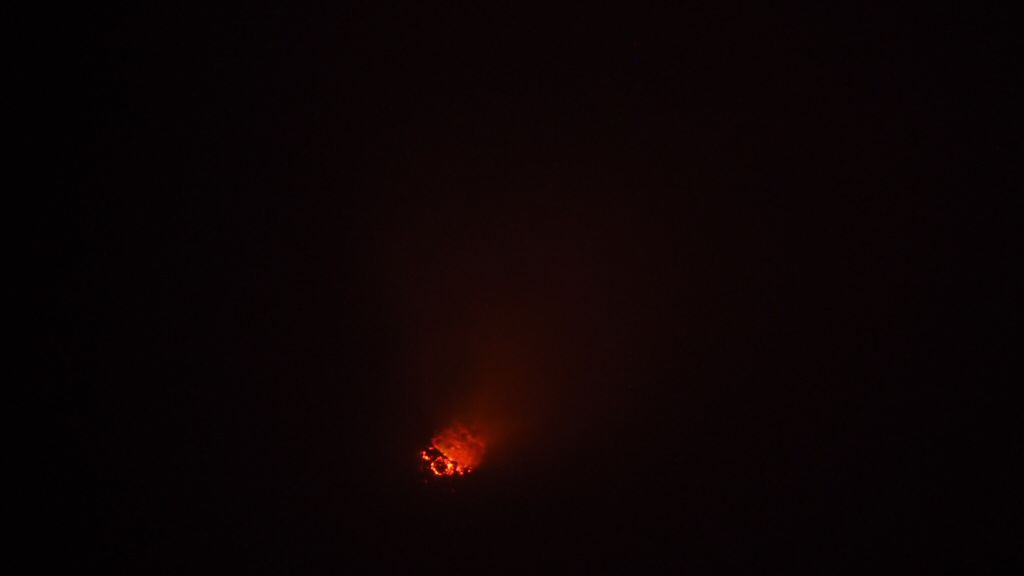
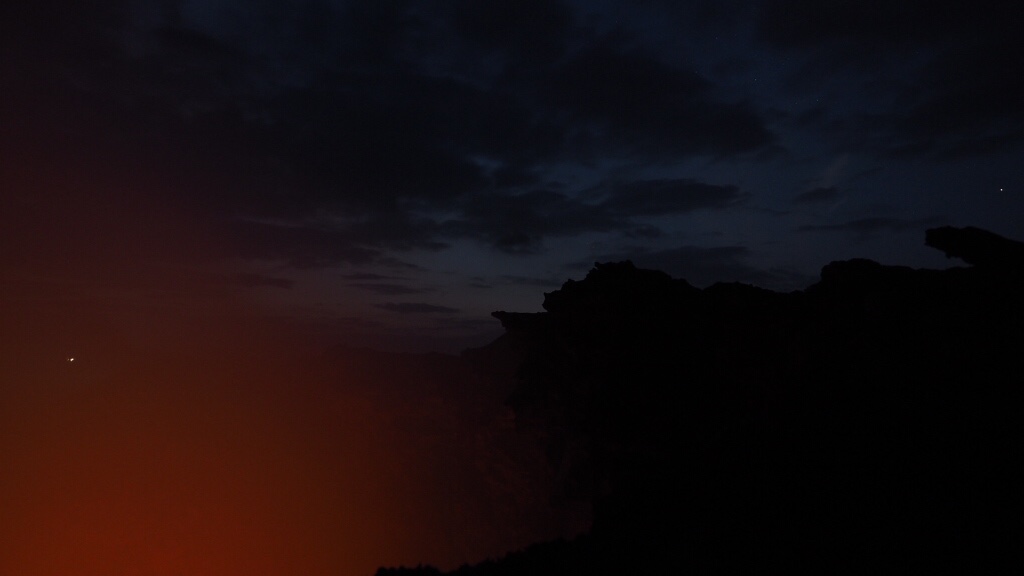
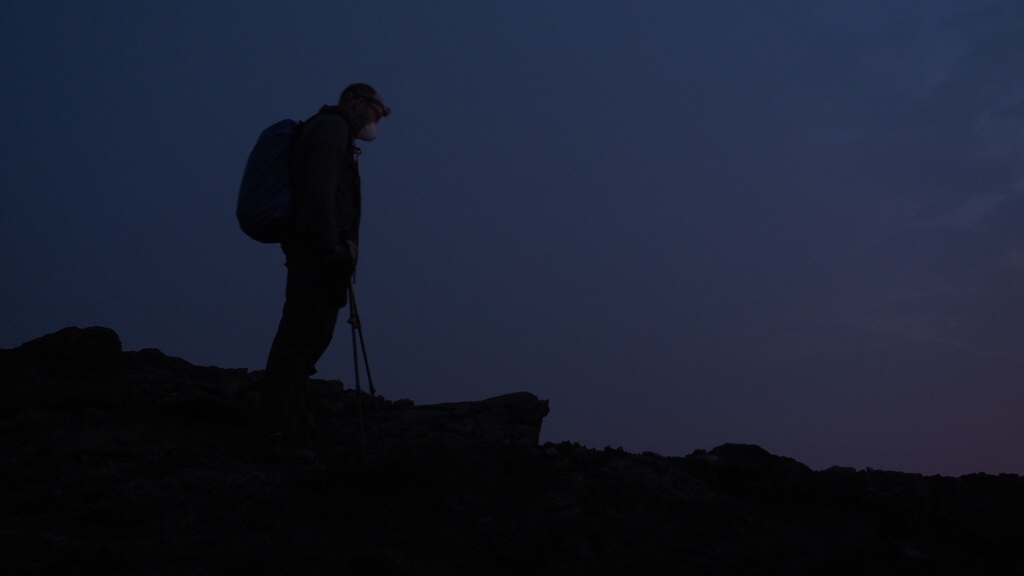

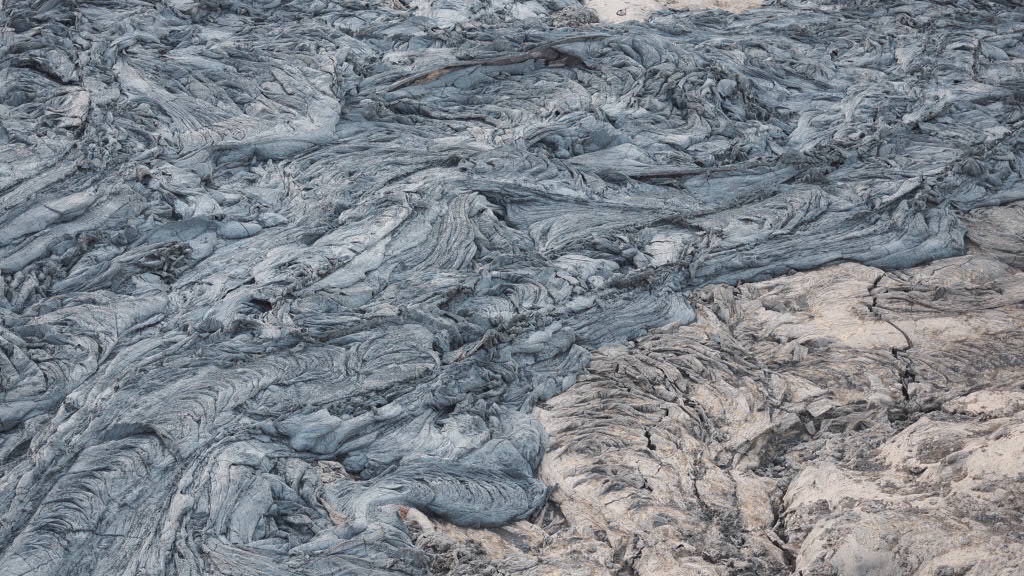
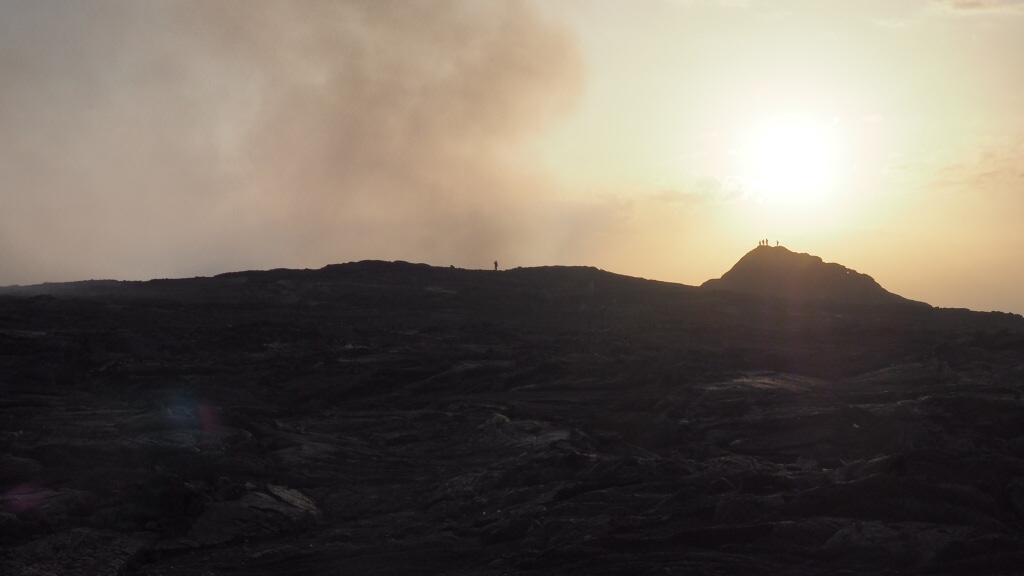
On our way back we stoped at Lake Afrera, another salt lake. After two days without a shower, quite a bit of walking and the desert heat, we jumped at the chance of some swimming, even in salt water. The top layer of the water was very warm but it got nicer about 20 cm below the surface. They told us that there was fresh water, too. They did not say it was water from a thermal spring and well over 40 degree C warm. I just went in to wash of the salt as quickly as possible while feeling like a lobster. Salted and boiled.
To wrap it up, we saw some really spectacular things. There is quite some time on the road involved but that will be cut significantly in the future since a new road is in the progress of being built by a Chinese company. It is demanding and we arrived back in Mekele exhausted and in need of a shower and fresh cloths. But it is certainly worth it and a once in a lifetime experience. I’m not sure if I’m ever going to (want to) be so close to an active volcano again, although we found the salt lake and sulfur geysers more fascinating.
